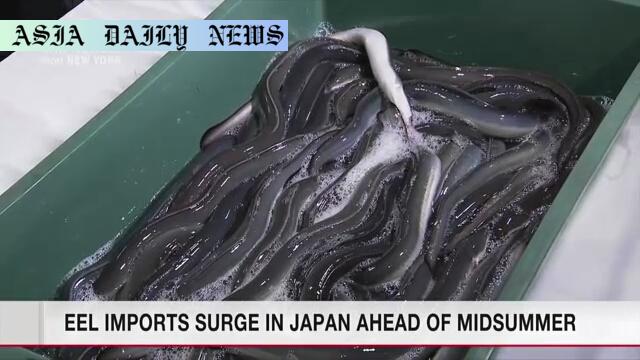Eel Imports: Live eel imports peak at Narita Airport in Japan as demand rises sharply ahead of midsummer traditions.
Eel imports to Japan surge as midsummer traditions heighten demand for live eels.
Over 2 tons of live eels were imported via Narita Airport recently.
High eel prices persist due to glass eel scarcity in recent years.
Narita Airport handles 80% of Japan’s live eel imports annually.

Eel Imports at Narita Airport Reach Peak Levels
Japan, widely known for its rich cultural customs and culinary traditions, has once again showcased one of its unique summer practices—eating eel during the midsummer Day of the Ox. Recently, Narita Airport, located near Tokyo, witnessed a peak in eel imports as the country braces for the demand surge around this tradition. This year, the two celebrated days fall on July 19 and 31, encouraging people to consume eel to replenish strength and stamina during Japan’s notoriously intense summer heat. Aircraft carrying over 2 tons of live eels from China and Taiwan have arrived this week, emphasizing the scale and significance of this seasonal phenomenon.
Why Live Eel Imports Are Crucial
Live eels are preferred to ensure the freshest quality, a benchmark for Japan’s culinary standards. Customs officials at Narita Airport diligently examine the cargo to verify its compliance with documented details, underscoring the country’s commitment to food quality and import regulations. Narita has become a crucial hub for eel imports, processing nearly 80% of Japan’s total live eel imports. In 2022, this amounted to a staggering 6,500 tons of eels transported through this airport alone. This highlights the pivotal role Narita plays in connecting Japanese consumers with fresh eel products sourced internationally.
Challenges Impacting Eel Prices
While the demand for live eel remains consistent due to its cultural importance, the availability and pricing of eel have been pressured by environmental and economic challenges. Importers have cited the ongoing shortage of glass eels over the past few years, which has compounded the difficulty of sourcing quality eel. Consequently, the pricing in Japan has remained high, mirroring a reflection of its limited global supply and increasing demand. This delicate balance between cultural significance and market dynamics underscores the relevance of eel in both tradition and economy.
Eel Consumption: A Cultural and Culinary Insight
For centuries, eel consumption has played a symbolic role in Japan’s midsummer celebrations. These seasonal meals are considered not only a source of sustenance but also a means to ward off heat-related fatigue. Restaurants across Japan prepare a variety of dishes featuring eel, including the popular “kabayaki” (grilled eel basted in sweet soy sauce). The meticulous preparation and presentation of these dishes speak volumes about the value Japanese cuisine places on elevating simple ingredients into exquisite culinary experiences. This underscores why the freshness of imported eels is so essential.
Global Observations and Future of Eel Imports
As the global market increasingly grapples with environmental sustainability, the eel industry has come under scrutiny for overfishing and depletion of eel populations. Countries like China and Taiwan continue to be leading exporters to Japan; however, efforts toward sustainable fishing practices remain essential for long-term stability. Whether through aquaculture innovations or establishing global conservation initiatives, the future of eel imports will likely hinge on balancing tradition with sustainability. Japan’s dependence on external suppliers such as China highlights the interconnectedness of global seafood commerce and the need for cooperative advancements.
Commentary
Significance of Eel Consumption in Japanese Culture
The tradition of consuming eel, or “unagi,” in Japan during midsummer is a remarkable reflection of how culinary practices intertwine with cultural beliefs. Beyond its delectable taste, unagi is cherished for its perceived ability to restore physical stamina during the grueling summer heat. This practice dates back centuries and remains a cherished custom across the nation. Eating unagi on the Day of the Ox, particularly, consolidates this tradition, making it a defining feature of Japan’s summer season.
Sustainability and Global Implications
While the cultural significance of eel consumption is admirable, it also brings to light critical concerns about sustainability. The high prices reported in recent years are not just the result of seasonal demand but also a consequence of declining glass eel populations globally. Overfishing, environmental degradation, and climate change have contributed to this phenomenon, forcing major suppliers like China and Taiwan to adapt to dwindling resources.
Future Outlook for Eel Imports in Japan
Japan’s reliance on imported eel raises important questions about the future. As Narita Airport processes nearly 80% of all live eel imports, it has essentially become a lifeline for maintaining this cultural practice. However, if global resources are not managed with precision, supply disruptions could challenge this tradition. Aquaculture advancements, stricter import regulations, and collaborative sustainability efforts may shape how and whether this tradition thrives in the years to come.


